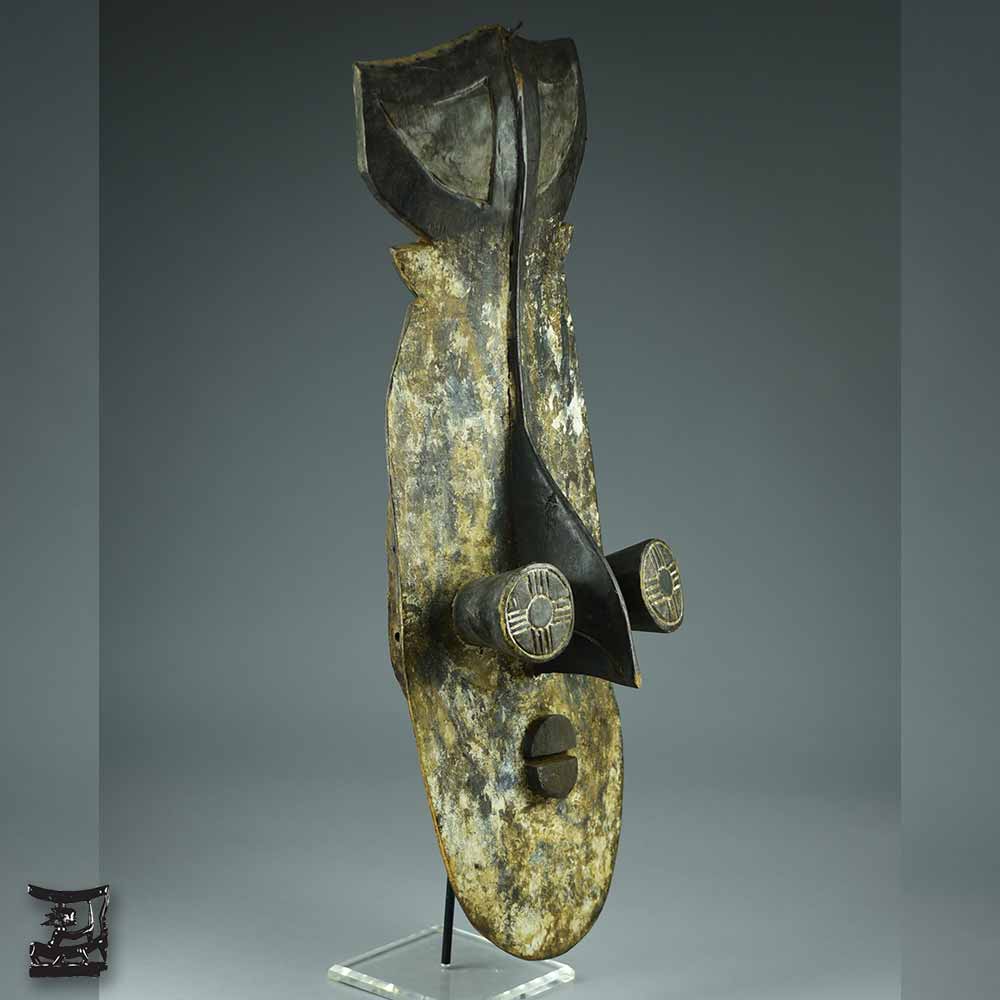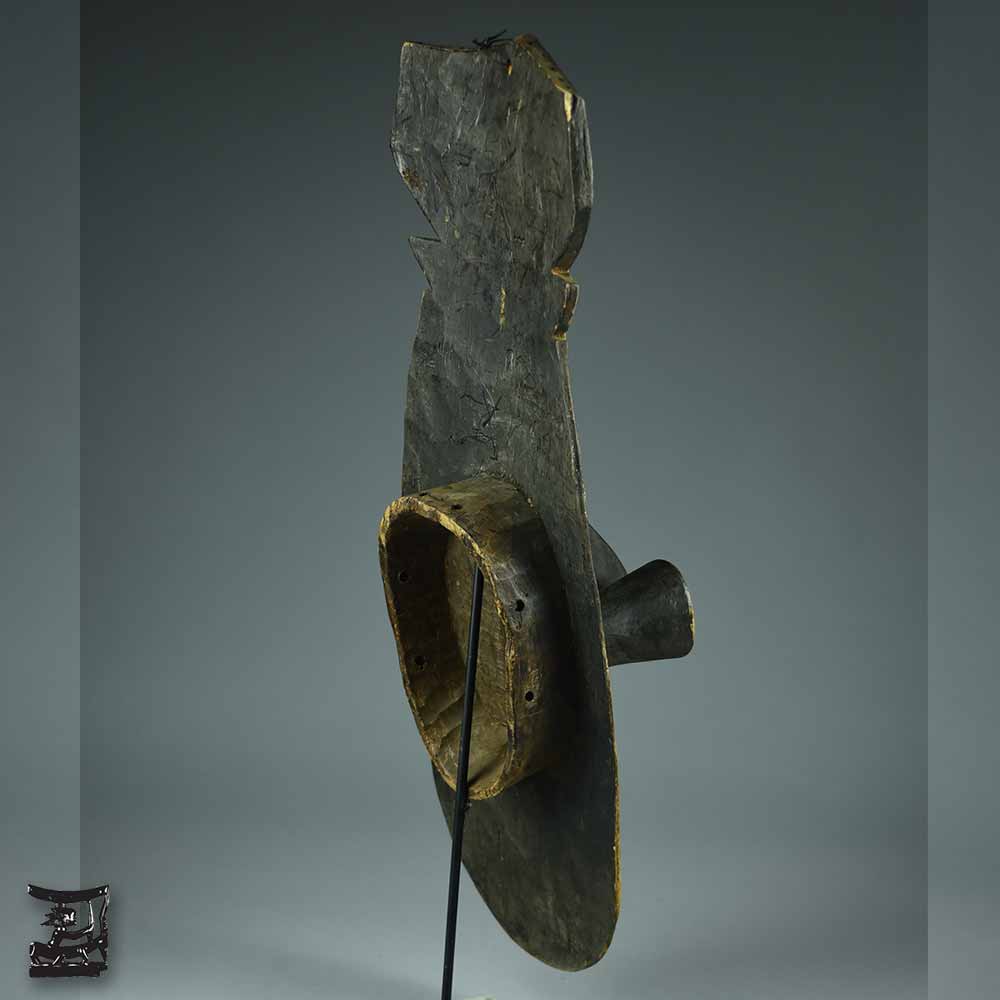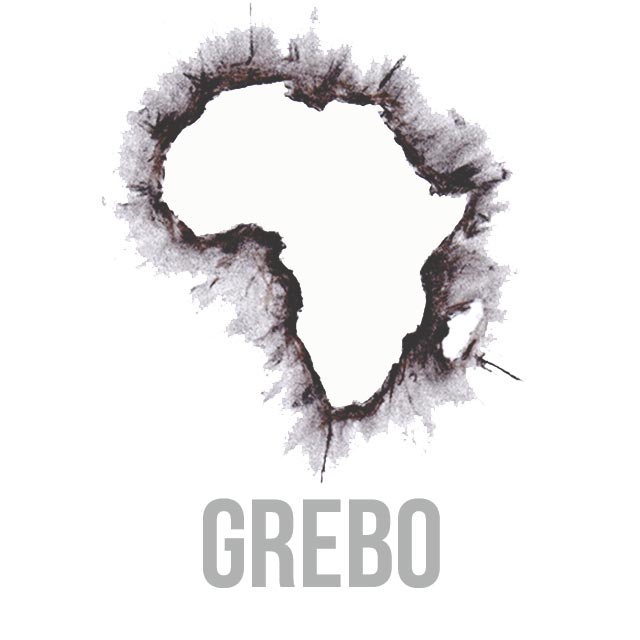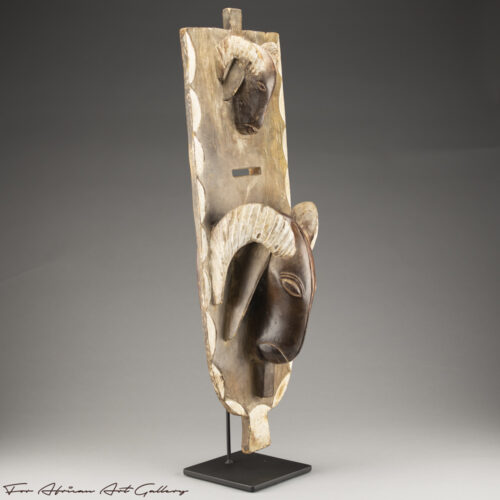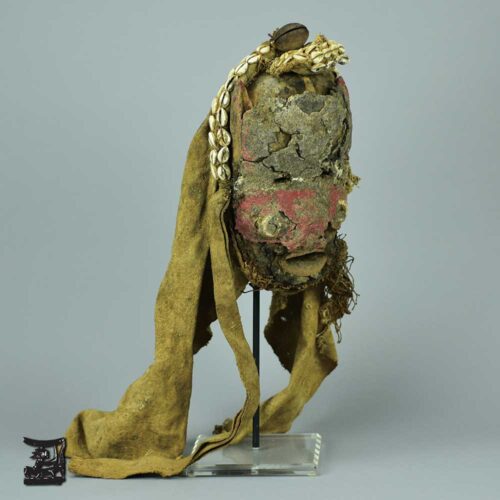Grebo Mask
$329.00
Out of stock
Out of stock
Details

ITEM NAME:
Grebo Mask
ITEM #:
55025
ETHNICITY:
Grebo
ORIGIN:
Liberia
MEDIUM:
Wood, Pigment.
DIMENSIONS:
31″ Tall (78.7 cm)
CONDITION:
Very Good.

PROVENANCE:
Jean Pierre Hallet Estate Collection – Florida, USA.

CATALOGUE NOTE:
The Grebo people, who dwell in the verdant landscapes of southeastern Liberia adjacent to the Ivory Coast, have gifted the world with one of the most captivating art forms—distinctive masks that have even caught the eye of legendary artists like Picasso. But what is it about these Grebo masks that made them stand out enough to influence Western art? It turns out, the answer can be found in their striking geometry and profound cultural significance.
Imagine gazing upon a mask with a face as flat as the calmest sea, a mouth etched into a perfect square, a gently rounded forehead, and a nose as pointed as the tip of a spear. It’s these geometric features, along with cylindrical, almost mechanical eyes, that lend the Grebo masks an otherworldly aesthetic, one so entrancing that the great Picasso himself held one in his personal collection, originally sourced through his Parisian art dealer.
Now, one might wonder, with such artistic beauty, what was the original function of these masks? Once upon a time, they played a pivotal role in warfare, acting as emblems of power and courage. Grebo leaders would don these masks to project strength and instill dread in the hearts of adversaries. Their visages would signal command, decisiveness, and the ferocious spirit of the tribe during conflicts.
Over time, the fearsome reputation of the masks transitioned to more peaceful, yet still profound, societal rituals. Today, they are an integral element of funeral rites for elders within the Grebo communities. These masks dance in honor of lives well-lived and wisdom bequeathed.
The traditional way of wearing these masks is just as fascinating. They could cover the face or stand mighty upon the head like helmets, serving as both shield and symbol. Although they no longer accompany warriors into battle, the masks carry the echoes of the past, encapsulating stories of leadership, cultural identity, and artistic distinction.
It’s unique traditions like these that enrich our understanding of human creativity and spirituality. The Grebo masks represent more than just an aesthetically pleasing artifact; they are a window into the soul of a people and a historical document that narrates their legacy. This is the beauty of historical African art—it embodies a confluence of function, form, and spirituality.
If you’re intrigued by the interplay between art and history as encapsulated by the Grebo masks, stay tuned to our blog for more insights into the captivating world of historical African art. The masks we have discussed, part of the esteemed Jean-Pierre Hallet Estate Collection, are but one example of how cultural artifacts can transcend time and geographical boundaries to leave an indelible mark on the world stage of art.


